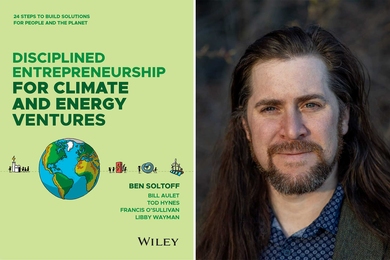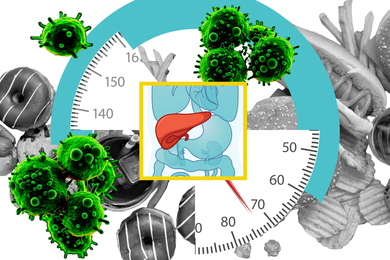In three major surveys of MIT faculty, alumni/ae and
undergraduates over the past year, most respondents report they are
satisfied with the In-stitute's academic environment but also pinpointed
some areas in which MIT could improve.
Asked to rate their overall college experience, 90 percent of MIT
undergraduates were satisfied or very satisfied. Eighty-seven percent
gave the same rating for their academic experience and residential life.
MIT compared favorably with other universities in the areas of academic
advising, social life, on-campus jobs and internships, career
development office, health services, student accounts, and athletic
programs. MIT students also compared favorably in the areas of career
preparation, understanding the nature of science and experimentation,
thinking analytically and logically, organizing their time, and
quantitative thinking.
MIT compared less favorably in the areas of faculty
accessibility, residential life office, student governance system,
library services and resources, size of classes, and foreign study
opportunities. The Institute compared unfavorably in the areas of
gaining a broad education, writing clearly and effectively, becoming
aware of different philosophies, and developing an understanding and
enjoyment of the arts.
The 1996 Survey of Enrolled Undergraduates, which was part of a
larger effort coordinated by the Consortium on the Financing of Higher
Education, provided information on MIT undergraduates' opinions as well
as comparative data for several peer institutions. Surveys sent to 4,500
students in March asked about student satisfaction with various offices
and areas at MIT; about 20 percent responded. Lydia Snover, senior
planning officer for institutional research in the Planning Office, has
staffed these surveys and is continuing to analyze the data.
FACULTY SURVEY
MIT faculty said in their own survey answers that their four most
important goals for undergraduates were to develop students' ability to
think clearly, increase their self-directed learning, and to prepare
them for graduate education and employment. Two-thirds of those who
responded said MIT is doing an adequate to excellent job in preparing
graduate students to teach and helping students to understand the world
they will enter. More than half said MIT is doing above average or very
well in preparing undergraduates for professional practice and
developing and delivering professional education.
The majority were very satisfied or satisfied with all aspects of
their position. Primary reasons that MIT faculty have pursued academic
careers are intellectual challenge (97 percent), intellectual freedom
(92 percent), freedom to pursue their own interests (87 percent), and
opportunities for research (86 percent).
The faculty survey was part of a nationwide survey conducted by
the Higher Education Research Institute at UCLA.
The least satisfying aspects of their jobs, they said, are social
relationships with other faculty (55 percent were satisfied),
relationships with the administration (69 percent), and salary and
fringe benefits (73 percent). Seventeen percent said they considered
early retirement in the last two years, and almost 50 percent plan to
work beyond the age of 70.
The four highest sources of stress for the faculty as a whole were
time pressures, lack of personal time, research/publishing demands and
household responsibilities. Almost 61 percent of women respondents
(compared to 34 percent of the men) reported that the promotion and
tenure process was a source of stress.
Other faculty highlights:
- 43 percent find MIT's international initiatives important and want to participate.
- Approximately 62 percent said post-tenure performance review should be based on all aspects of faculty responsibility: research, publication, teaching and committee participation.
- 75 percent of the faculty plan to do part-time teaching and/or research at MIT after they formally retire.
- Almost 43 percent said MIT was not doing well in reducing administrative burdens on the faculty.
Questionnaires were sent to 900 faculty in October 1995 and again
in February 1996. Respondents were asked about how they spend their
time, educational goals for undergraduates, personal goals, satisfaction
with various aspects of their jobs, perception of institutional
priorities, stress, and teaching techniques and evaluation methods.
ALUMNI/AE POLLED
Results of a third survey sent to the 3,600 graduates of the
classes of '77, '82, '87 and '92 in February are providing insights in
MIT students' post-graduation education and career paths, as well what
skills they use most after they leave the Institute.
On average, 82 percent of the alumni/ae were generally or very
satisfied with their undergraduate education, with less than 3 percent
being generally or very dissatisfied. Seventy-six percent received or
are pursuing additional degrees beyond their SB. Eighty-one percent are
now working for pay, 10 percent are studying for a degree and only 1
percent are looking for employment. Respondents said that the most
important aspects of a job are enjoyment of work, intellectual challenge
and the opportunity to grow professionally.
Of the possible outcomes of an undergraduate education, the most
important for alumni/ae were analytical and problem-solving skills,
ability to think critically, capacity for lifelong learning, and writing
clearly and effectively. The least important were knowledge of social
and political issues, appreciation of arts and literature, religious
beliefs and convictions, and foreign language ability.
Asked what they believed MIT should most strongly emphasize,
alumni/ae targeted the quality of their major, provision of high-quality
facilities, the value of undergraduate education and faculty emphasis on
research. Respondents also said they felt MIT's true priorities also
included faculty research and commitment to academic freedom.
A version of this article appeared in MIT Tech Talk on December 18, 1996.





